Between February and July 1836 nine ships left England bound for South Australia. Four carried South Australian Company officials, labourers, fisherman and supplies to the new colony. These were the John Pirie, Duke of York, Lady Mary Pelham and Emma. Colonel Light’s surveying party was aboard two of the Colonization Commissioners’ ships, the Cygnet and Rapid. Two privately chartered barques, the Africaine and Tam O’Shanter brought out more emigrants, provisions and building supplies for the establishment of the province. Finally the Buffalo, conveying Governor Hindmarsh and his officials and other passengers, was the last of these nine vessels to leave England and the last to arrive in South Australia on 28 December 1836.
Profiles for each of the vessels – listed in alphabetical order- can be found below.

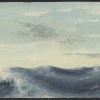
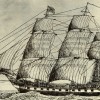
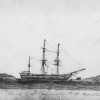

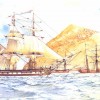
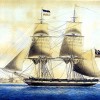


Comments or Questions:
10 Responses to “Ship Arrivals”